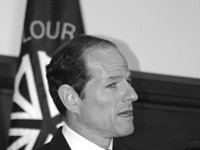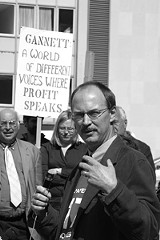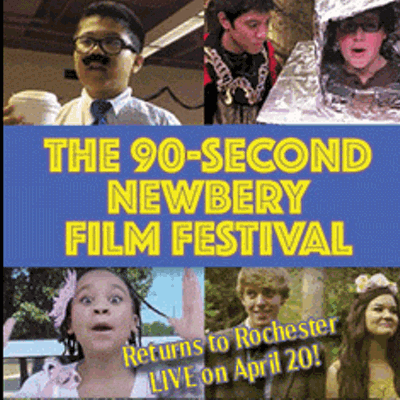[
{
"name": "500x250 Ad",
"insertPoint": "5",
"component": "15667920",
"parentWrapperClass": "",
"requiredCountToDisplay": "1"
}
]
Media
What will the future of journalism look like in this town?
That's a question a lot of people would like to know the answer to, but probably few more so than the editorial staffers at the region's biggest news outlet.
Writers at the Democrat and Chronicle marked 14 years without a contract two weeks ago with a rally in front of the Blue Cross Arena, across from the papers' building. The Newspaper Guild of Rochester, the union representing newsroom employees, has been in negotiations with the paper's management (plus a lawyer from Gannett's corporate headquarters), but haven't managed to reach an agreement. In the past, they've accused the company of negotiating in bad faith. Earlier this year, the paper abruptly reversed course and allowed a federal mediator to attend the negotiations. Newsroom union reps say they view that as a positive step, even though it has resulted in few tangible changes for them so far.
Perhaps the biggest sticking point is over a 401(k) plan. The paper won't offer that popular retirement arrangement (where employers match employee savings) to anyone represented by the Guild, even though just about everyone else in the building receives it.
The rally --- put on by the Guild --- attracted a broader labor union representation than in years past.
Among the speakers was Jim Bertolone, who heads the local chapter of the AFL-CIO. Bertolone vowed to take the fight to the doorstep of some of the state's most powerful political candidates, Attorney General and gubernatorial favorite Eliot Spitzer and Senator Hillary Clinton.
"I'm going to work with them to boycott this editorial board this season," he told the rallying workers.
Last year, all four major-party candidates for mayor boycotted the D&C's editorial-board interviews, but the editorial page still made endorsements (Bob Duffy, in the both the Democratic primary and general election).
Some other local politicians are also on board with the Guild.
Republican State Senator Joe Robach and Democratic Assemblymember (and Assembly Labor committee chair) Susan John both gave brief speeches at the rally.
There's no real reason for the state legislature to get involved in the dispute, and neither legislator promised any particular action. Their presence was more for moral support than anything else. Both railed against the stalled negotiations and singled out the 401(k) issue in particular.
"It's not like they're asking for something different," said Robach. "They're asking for parity. That's fair. This contract should be resolved."
John focused on the length of the time the reporters had gone without a contract.
"Fourteen years: that's a pretty bad statement," she said. "When any employer disrespects its workers, it's a disrespect to all of us who work in this community."
The Democrat and Chronicle's management, contacted the day of the rally, declined to talk for this story. An employee in the office of Publisher Mike Kane's office who identified himself only by his first name, Dan, read the paper's statement, which he attributed to the paper's spokesperson and director of marketing services, Tom O'Connor: "There's no reason to comment on that at this point."
While union rallies like this one are great at focusing attention on immediate disputes, they can also obscure the deeper issues behind them.
The newspaper business, indeed the whole journalistic establishment, is changing faster than at any time in its history. Circulation and advertising revenue, the two cornerstones of large metropolitan dailies, have been shrinking.
The big papers are still generally profitable, but they're not growing, and for big publicly traded media companies (including Gannett, but also the New York Times Company and McClatchy, just to name two others), that spells trouble on Wall Street.
In an attempt to stem this tide, papers are frantically branching out, expanding their presence into niche markets and on the internet. For the local Gannett operation, that translates into things like Big Auto Book, Insider, Rochester Magazine, and a Finger Lakes wine website. In Rochester, the company's products combined represent one of the highest levels of market penetration in the nation. And yet it's still not enough. In August the paper unveiled yet another niche publication: her, a women's magazine.
But those steps were already happening a year and a half ago when Guild members embarked on an advertising campaign to publicize their cause and got the attention of Rochester media outlets, including this one (See "Dollars or Sense?" May 4, 2005).
So what's changed?
"The pattern's been broken. That's what's changed," says Steve Orr, an investigative reporter at the D&C and the Guild's president. The pattern he's talking about is the one where profitable chains slowly make deeper and deeper cuts, which appeases company shareholders. It was never an arrangement that made anybody --- newsrooms, boardrooms, shareholders, or the public --- terribly happy, but it seemed to work.
What changed that was a little-known Florida-based investor named Bruce Sherman. Sherman's firm Private Capital management was the largest shareholder in Knight Ridder, which was the second-largest newspaper chain in the nation (behind Gannett).
Last fall, Sherman, dissatisfied with the company's stock performance and believing its management hadn't made sufficiently deep cuts, led a shareholder revolt. At Sherman's urging, Knight Ridder ultimately sold itself to the McClatchy Company, which auctioned off a few of the larger, less profitable properties, including both dailies in Philadelphia. The Philadelphia papers were bought by a private group put together by local PR man Brian Tierney.
Recently a slew of articles in outlets that cover media, including a cover story in the Columbia Journalism Review, have advocated private, local ownership as the savior of the embattled metro daily. Rochester reporters are watching what happens in Philly with interest, but also with a healthy dose of skepticism. What if a local millionaire owned the D&C rather than Gannett?
"It's hard to know what's better," says Orr. For a primer on what can go wrong when a wealthy private owner buys a newspaper, type "Wendy McCaw" and "Santa Barbara News-Press" into Google News.
Now the cycle may be repeating itself at the Chicago-based Tribune Company. Tribune is busy fending off a stockholder revolt from its largest shareholder, the Chandler family, on one hand and a revolt inside its largest newsroom on the other. LA Times Editor Dean Baquet said in the pages of his own newspaper that he wouldn't make the latest round of cuts ordered by the company. His publisher is backing him up. A handful of Los Angeles billionaires are waiting in the wings with offers to buy the (profitable) paper from Tribune.
What's so troubling about all of this to most journalists is not that newspapers have become unprofitable. Just the opposite: they're failing on Wall Street despite their profitability.
"It's not like you're talking Bethlehem Steel, which was bankrupt," says Orr.
So far, Gannett doesn't seem to be in quite the same situation as Knight Ridder or Tribune. One reason may be control. At the time when he forced the Knight Ridder sale, Sherman owned about 19 percent of the company's stock. The Chandler family controls 12 percent of Tribune's stock and three seats on its board. No single institutional shareholder holds anywhere near that much control of Gannett.
But Gannett is also sheltered from market upheaval for now in part because it's already cut more deeply than Knight Ridder or Tribune had, says its newsroom union.
Locally, bureaus are a thing of the past; the last one, in Canandaigua, closed late last year. The number of metro beats has shrunk from about 20 down to just a half dozen or so, according to the union, as more reporters are shifted to covering the suburbs. One busy reporter, Joe Spector, even has responsibility for two full-time beats: politics and MonroeCounty government.
Fewer plum assignments mean fewer incentives for talented writers to stay. In recent months there's been a small exodus of editorial staffers from prominent slots, including classical-music writer John Pitcher, environment reporter Misty Edgecomb, features writer Maeleeke Lavan, business reporter Nishad Majmudar, and photographer Heather Charles.
In an internal newsletter announcing some of the departures, Managing Editor Neill Borowski wrote: "We are working diligently to fill openings."
The Guild doesn't contradict that, but it notes that so far, at least, many of those openings have gone unfilled.
"Every week the slot's not filled, you save money," says Orr.
If there's a bright spot in the newsroom on Exchange Boulevard, it's the paper's online efforts.
"They've actually added staff," says Orr, and then, with a trace of awe (or maybe just jealousy), adds: "They have a capital budget."
According to sources, general assignment reporter Jeffrey Blackwell is about to become the paper's first fulltime online reporter. He'll be trained to put his journalistic skills to work across a variety of platforms including photos, videos, and, of course, text.
That kind of arrangement is a taste of what the future of journalism will look like, and the union is cautiously optimistic about the paper's newfound interest using the web that way. And that focus on the web is already spilling over into the print newsroom.
"There's more and more emphasis for all of us to take a new-media approach to what we do," says Orr. He and Guild Vice President Gary Craig joke that the best way to get attention and funding for a project is to pitch it with a strong multimedia component.
But the Guild is worried that by changing the medium in which reporters are working, there's a danger of changing the way the news value of an event is judged. Once the D&C starts running a steady stream of videos, will car chases and fires become more important news events?
And the guild fears that with a depleted staff, online extras like podcasts, video, blogs, and rolling updates will wind up simply meaning more work for a staff already stretched too thin.
Speaking of Rochester Democrat And Chronicle, Gannett
-

Four more paperboys sue the Democrat and Chronicle claiming sexual abuse
Feb 26, 2020 -

GateHouse and Gannett agree to merge
Aug 5, 2019 -

GateHouse and Gannett talk consolidation
Jul 24, 2019 - More »
Latest in News
More by Krestia DeGeorge
-

The last wild Finger Lakes
Jan 17, 2007 -

Designers get their turn at downtown
Jan 17, 2007 -

From the new governor: fighting words
Jan 10, 2007 - More »






